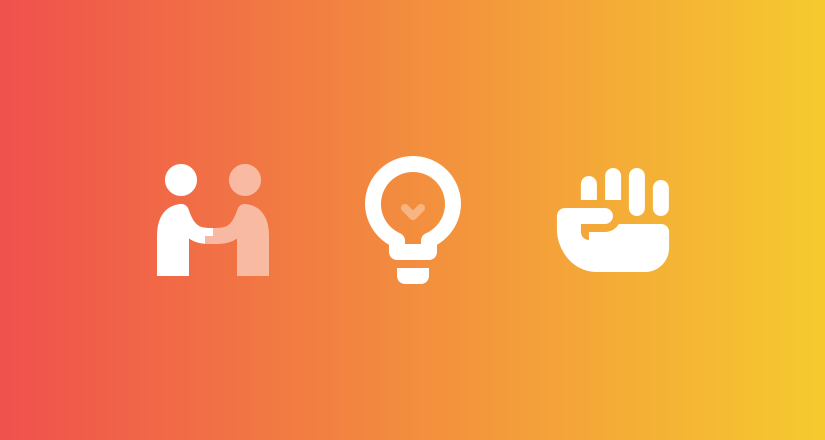In the first three parts of this series (part 1, part 2, part 3) we looked at how power works within GNOME and what that means for getting things done. We got to the point that to make things happen you (or someone you’ve hired) need to become a trusted member of the community, which requires understanding the project’s ethos.
In this post we’ll go over that ethos, both in terms of high level values, and what those translate to in more practical terms.
Values and Principles
GNOME is a very principled project, and there’s a fair amount of writing on this topic already.
Allan Day’s “The GNOME Way” (2017) is a great starting point, but I’d also recommend Havoc Pennington’s classic “Choosing our Preferences” (2002), and Emmanuele Bassi’s “Dev v. Ops” (2017). I’ve also written about some aspects of this in the past, including “There is no Linux Platform (2019)”. For some broader historical context also check out Emmanuele’s excellent History of GNOME podcast.
To give you an overview though, here’s my personal bullet point summary. It follows the same structure as the development process laid out in part 2 based on what areas specific values and ideas apply to. It’s not meant to be comprehensive, but rather give you an idea of the way people inside the project think.
The Why
Base motivations that inform everything we do.
- We believe in software freedom as an inclusive, accountable model for producing technology in the commons.
- Our software is built to be usable by everyone. We care deeply about user experience, accessibility, internationalization, and support for a diverse range of hardware.
- Software should be structurally and aesthetically elegant, both in terms of underlying technology and user interface.
The What
What kinds of things we think are worth pursuing, and (just as important) what kinds of things should be avoided.
- Third-party apps are the best abstraction to extend the core system with additional functionality. This is why we put a huge amount of work into empowering third party app developers to build more and better apps.
- Every preference has a cost, and this cost rises exponentially as you add more of them. This is why we avoid preferences as much as possible, and focus on fixing the underlying problems instead.
- Similarly, there is a direct relationship between how vertically integrated a product is and how cohesive you can make it. Every unnecessary variable you eliminate across the stack frees up time and energy, and creates opportunities for features you couldn’t otherwise build.
- People’s attention is precious. We pride ourselves in being distraction free.
The How
Useful rules of thumb around how we go about making things.
- We don’t do hacks. Rather than working around a problem at the wrong layer of abstraction, we believe in going to the root of the problem and fixing it for everyone, even if that means digging into lower layers (and ends up being far more difficult as a result).
- We see design holistically, rather than as an isolated thing the design team does. It’s not just about functionality and aesthetics, but also underlying technology, and what to build in the first place. Even if you’re not contributing on the design team, developing an affinity for design will make you a more effective contributor.
- Looking at relevant art is important, but simply copying the competition doesn’t usually produce great results. We have a proud history of inventing new paradigms that are better than the status quo.
- As a general rule, start from the user experience you want and then go about building the technology necessary to create it, not the other way around. However: This is not an excuse for bad engineering or pursuing ideas that are conceptually impossible (e.g. multi-protocol chat clients).
- Defer to the Expert. Everyone has different areas of expertise, such as user experience, security, accessibility, performance, or localization. Listen to the people most experienced in a given domain.
- Design is all about trade-offs. Be wary of hard and fast rules that only look at one part of a problem (e.g. “vertical space is at a premium, therefore…”), and instead try to balance various concerns in a way that works well overall.
In Practice
Some of the above principles are quite abstract, so what do they translate to when actually building software day to day? Here are some examples of how they apply to real-world questions.
- App developers should do their own packaging. It’s the only way to do it sustainably at scale.
- Flatpak is the future of app distribution.
- The “traditional desktop” is dead, and it’s not coming back (Note: I’m talking about Windows 95 era UI patterns here, not desktop vs. mobile). Instead of trying to bring back old concepts like menu bars or status icons, invent something better from first principles.
- System-wide theming is a broken idea. If you don’t like the way apps look, contribute to them directly (or to the platform style).
- Shell extensions are always going to be a niche thing. If you want to have real impact your time is better invested working on apps or GNOME Shell itself.
- “Filling the available space” is rarely a good goal by itself, and an easy way to design yourself into a corner.
All of the above is of course my personal perception, and you’ll find variations on these ideas depending on who you talk to. However, in my experience most of them are shared fairly consistently by people across the community, especially given our informal structure.
Now that we’ve covered how things get done, by whom, and why, you’re in a great position to start making your mark. In the next part of this series we’ll look at practical first steps for contributing.
Until then, happy hacking!
